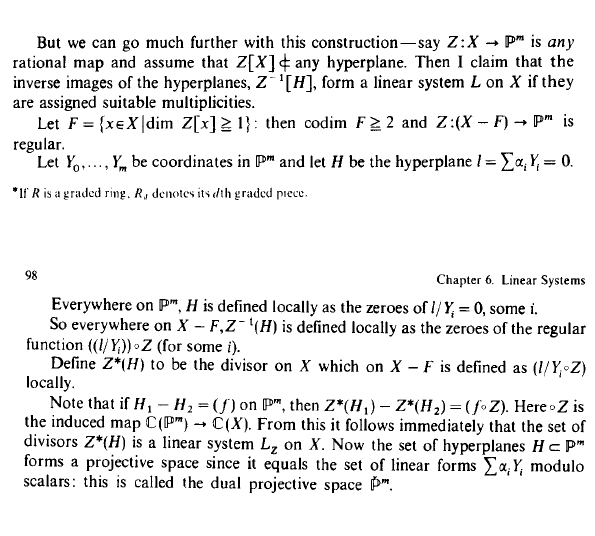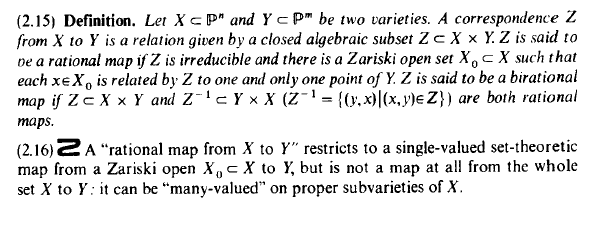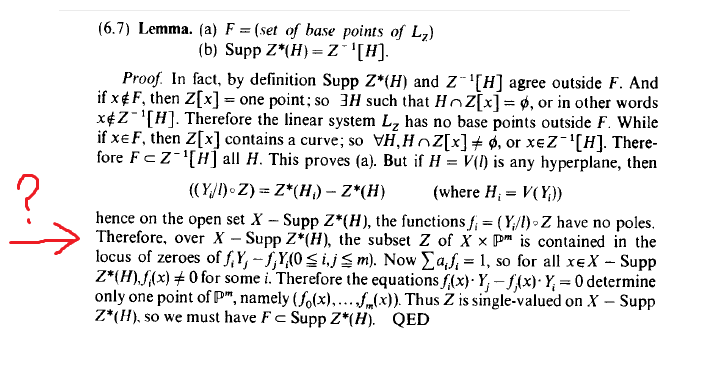I study David Mumford's Algebraic Geometry I - Complex Projective Varieties and have some problems to understand a step in the proof of Lemma 6.7 (b). Firstly, the general setting & preparations around the problem I intend to present below (pages 97/98):
Some remarks on used notations: For a rational map $Z: X \dashrightarrow \mathbb{P}^m$ Mumford uses the notation "$Z$" ambiguously. On the one hand for rational map itself, on the other hand he associates to the rational map a closed subvariety $Z \subset X \times \mathbb{P}^n$ which he calls "correspondence", noted also by $Z$: (See also Def 2.15 page 29)
I think that if $Z: X \to \mathbb{P}^m= \operatorname{Proj} \mathbb{C} [Y_0,...,Y_m]$ is moreover a regular map defined by $x \to [f_0(x):...f_m(x)]$ then $Z \subset X \times \mathbb{P}^m$ coinsides with vanishing locus $V(..., f_i Y_j - f_j Y_i,... ) \subset X \times \mathbb{P}^m$. First question is does this closed subvariety $V$ coinside exactly with the closure of graph $\Gamma_Z$ of $Z$ of we assume that $Z$ is a regular map?
Another probably not well known notation Mumford uses is $Z[S]$ for closed $S \subset X$. Here the definition (see Cor. 2.26 page 35):
Having the background now we now come to my actual problem:
PROBLEM: I not understand following argument from proof on 6.7 (b) (p 98):
For $H:=V(l)= V(\sum \alpha_i Y_i)$ and $H_i := V(Y_i)$, we observe that because of
$$((Y_i/l) \circ Z) = Z^*(H_i) -Z^*(H)$$
all $f_i=(Y_i/l) \circ Z$ have over $X \backslash \operatorname{Supp} Z^*(H)$ no poles. (because over this subset the divisor $(f_i)$ is positive)
But why does this observation imply that over $X \backslash \operatorname{Supp} Z^*(H)$ the correspondence $Z$ (considered again as subset of $X \times \mathbb{P}^n$) is contained in $V(..., f_i Y_j - f_j Y_i,...) \subset X \times \mathbb{P}^m$? That is in the locus of zeros of $f_i Y_j - f_j Y_i$ for $0 \le i,j \le m$?
In other words why the condition that $f_i$ have tono poles over $X \backslash \operatorname{Supp} Z^*(H)$ suffice, to conclude that $Z \subset V(..., f_i Y_j - f_j Y_i,...)$? Why is this assumption on the $f_i$ it neccessary?




